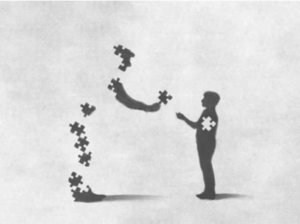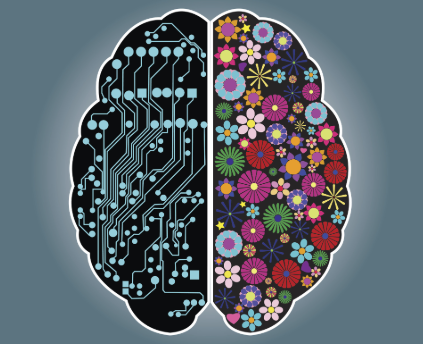Lesson 41: God goes with me wherever I go.
The one thing we do not do, says Jesus in Lesson 41, is question the reality of the problem.
The problem is that we, “the separated ones” feel so lonely and abandoned that it leads to depression, “anxiety, a deep sense of helplessness, misery, suffering and intense fear of loss.” But these feelings are the effects, the symptoms, of our fixed belief that we are separated from God and can never go Home. They are not the cause.
Jesus tells us, “…despite the serious and tragic forms” our idea of separation produces, this idea is not reality. Jesus knows we are convinced life in human form on planet earth is reality, but he lays out the truth for us anyway:
“Deep within you is everything that is perfect, ready to radiate through you and out into the world. It will cure all sorrow and pain and fear and loss because it will heal the mind that thought these things were real, and suffered out of its allegiance to them.”
He goes on, “You can never be deprived of your perfect holiness because its Source goes with you where you go.” And he adds, “We understand you do not believe all this. How could you, when the truth is hidden deep within, under a heavy cloud of insane thoughts, dense and obscuring, yet representing all you see?”
Jesus advises that we “sink down and inward, away from the world, and all the foolish thoughts of the world. You are trying to reach past all these things. You are trying to leave appearances and approach reality.”
Lesson 41 is so full, it offers so much. It tells us “It is quite possible to reach God. In fact it is very easy, because it is the most natural thing in the world.”
Quite importantly, for so many of us, Jesus concludes, “You can indeed afford to laugh at fear thoughts, remembering that God goes with you wherever you go.”
![]()




 Lesson 39 tells us guilt is hell. What is the opposite of guilt? The wholeness and holiness of Innocence. Of undifferentiated Oneness.
Lesson 39 tells us guilt is hell. What is the opposite of guilt? The wholeness and holiness of Innocence. Of undifferentiated Oneness. Ken Wapnick used to say that the dream of the world and bodies is our dream and we could have dreamt it any way we wanted to. So why did we dream it up the way we have? Filled with acute suffering and exquisitely difficult complexities. Ken also often said that we can drag Jesus into our personal dreams and demand that he fix our imaginary human problems; it is okay to do that. It’s just that pulling Jesus into our ego dreams will keep us on the bottom rungs of the ladder back to God’s Kingdom in Heaven.
Ken Wapnick used to say that the dream of the world and bodies is our dream and we could have dreamt it any way we wanted to. So why did we dream it up the way we have? Filled with acute suffering and exquisitely difficult complexities. Ken also often said that we can drag Jesus into our personal dreams and demand that he fix our imaginary human problems; it is okay to do that. It’s just that pulling Jesus into our ego dreams will keep us on the bottom rungs of the ladder back to God’s Kingdom in Heaven. Jesus explains, “Your purpose is to see the world through your own holiness.”
Jesus explains, “Your purpose is to see the world through your own holiness.” Making no demands, because as explained elsewhere in the Course, as God’s Creations we have no needs, “offers everyone his full due.” And, “No one loses; nothing is taken away from anyone; everyone gains through your holy vision. It signifies the end of sacrifice because it offers everyone his full due.”
Making no demands, because as explained elsewhere in the Course, as God’s Creations we have no needs, “offers everyone his full due.” And, “No one loses; nothing is taken away from anyone; everyone gains through your holy vision. It signifies the end of sacrifice because it offers everyone his full due.” “My holiness envelops everything I see” is an extension of yesterday’s idea that “My mind is part of God’s. I am very holy.” Yesterday, Jesus established the Source of our true Identity. We are holy because we are an extension of God’s Wholeness. God is the Great Light and we are God’s Great Rays. Nothing can but arise except from the Light of Being.
“My holiness envelops everything I see” is an extension of yesterday’s idea that “My mind is part of God’s. I am very holy.” Yesterday, Jesus established the Source of our true Identity. We are holy because we are an extension of God’s Wholeness. God is the Great Light and we are God’s Great Rays. Nothing can but arise except from the Light of Being.

